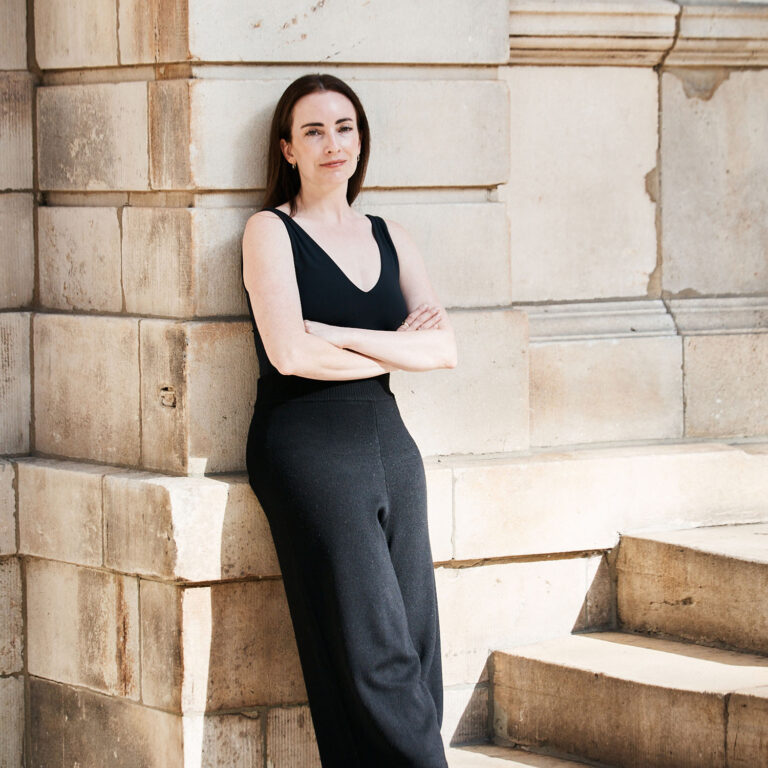
In the realm of environmentally conscious architecture, few names resonate as profoundly as Jeanne Gang's. The Illinois native—and founder of the Chicago architecture and urban design practice Studio Gang—has carved out a distinct place in a crowded field by designing structures that meld with their environments, radically reimagining the potential of preexisting buildings, and engaging with questions about the future of the built environment that many in her field are tempted to ignore.
Last week, during the Triennale Milano, Gang spoke as part of The World Around and Foundation Cartier’s first collaborative program, IN FOCUS: RADICAL REPAIR. The event convened a group of innovative and interdisciplinary designers to address the question, What radical repair actions can we invent to heal a world in a climate crisis? Gang was joined on stage by Yasmeen Lari, the keynote speaker who reflected on the state of climate activism; The Green Wall Initiative’s Paul Elvis Tangem, who addressed sustainable land management practices in Africa’s dry regions; and Design Academy Eindhoven creative director Joseph Lima, who posited a set of non-extractive architecture practices for a greener future.
Gang, for her part, elaborated on the concept of grafting—a term borrowed from the horticultural practice of combining the tissues of two plants to produce a stronger hybrid. Recent Studio Gang projects that involved the integration of new architectural elements into preexisting structures, such as the Richard Gilder Center for Science, Education and Innovation at the American Museum of Natural History and the Arkansas Museum of Fine Arts, manifest the success of this technique to awe-inspiring effect. Grafting is an apt reflection of Gang’s ethos—a reverence for nature and a wilyness with regard to manmade resources and constraints. CULTURED sat down with the architect to discuss her motivations, her upcoming book, and her vision for a more environmentally-responsible future.
CULTURED: What are the biggest inquiries or urgencies in the work you're doing right now?
Jeanne Gang: It's the climate transition and getting all the buildings to zero carbon. It’s not just the work involved—it’s also about bringing clients along with that kind of thinking. In a way, it's a super exciting time. People are more alert; they know that we’re in the middle of an emergency, and they're willing to try new things. There’s much more openness than I've seen in the past.
CULTURED: Is there less client hand-holding required than there may have been earlier in your career?
Gang: Yes. We've been doing this work for so long, and historically, the client response was, “We’ll try our best.” Now, the process moves faster. Part of it is the environmental regulations—they have to be more adaptable. I’m really excited about trying to expand the creative potential for things like repair and reuse of buildings.
CULTURED: Can you elaborate on that idea of repair and reuse?
Gang: I have a book coming out in January that's all about grafting. It’s about taking this activity that's common in horticulture, and expanding or developing it. I've been pursuing this work for a few years—through my research at Harvard and in practice. The book brings it all together. It’s timely because we really need to reuse buildings and think of them as little nuggets of carbon gold that we cannot just tear down and replace.

CULTURED: Is there a project you’ve worked on recently that feels like your problem child, like a beloved and unruly experience that has a special place in your heart?
Gang: Probably the Richard Gilder Center for the American Museum of Natural History. It was such a long, long project. I put so much thought and problem solving into it. In a way, it was a kind grafting because we had to work on foundations that were already there, and on an existing museum made up of 26 different buildings. There's a lot of complexity to it. But at the end of the day, it had a great mission behind it. How do you make people fall in love with nature and want to save it? Everyone who worked on the project was amazing. It just opened in May, and it was such a huge investment of my time. 10 years! It was very experimental, and the museum was very on board with that. I [spoke] about the Gilder Center at the Milan Triennale conference because it falls under the category of grafting.
CULTURED: The Richard Gilder Center is such a moving space. You can tell at least some of that quality is derived from the constraints of working within a mammoth preexisting museum complex.
Gang: Oh, absolutely. The Arkansas Museum of Fine Arts was similar to the Gilder Center in that it was a messed up space that was built on over time. We were trying to give it a sense of freshness while adding capacity to it. It didn’t get as much attention because the American Museum of Natural History is much more well known, but it was a really amazing project, too.
CULTURED: When you take on a project that has a specific mission (in the case of the Gilder Center, to make people feel humbled by nature) are there certain elements of your approach that change?
Gang: The process is the same. We try to go beyond the footprint of the site itself and connect it to the wider elements. Whether the goal is to get people excited about nature, or to connect to the Manhattan grid—and by extension, to the Manhattanhenge (which is really planetary). How does a building resonate outward, beyond the boundaries of simply being an object?
I like to think about the different relationships a building has the potential to catalyze. It's an amalgamation of the many processes and opportunities that come from what surrounds it. Who are the people that are coming there? The creative part comes after you understand this context at a deep level. Sometimes it's about going into the model shop and just making some stuff.
CULTURED: Can you describe the model shop?
Gang: Our shop is a collaborative space. I might grab someone from the team to go in and work together. We had a breakthrough moment with the Gilder Center—our software was not working, the model looked ugly, and we needed to get the thing porous. So we got a block of ice and started melting it with a blowtorch. It was this very analog epiphanic moment.
CULTURED: I love that. It makes sense when you stand inside the building, it feels like these caverns have eroded over time.
Gang: Exactly—it’s eroded, and that is the best way to create an opening in a structural wall, because the forces go around it. It's really efficient at what it's doing.
CULTURED: When you take on projects like Tom Lee Park in Memphis, how do you ensure that the community you're working in feels engaged with the project?
Gang: That’s another project that was more on the problematic side. The project took perseverance. We wanted people to think of the riverfront as a public place. We wanted people to embrace the river, so we went into the neighboring communities and did a lot of talking. We had a youth design group with high school students, and asked them what it would take to bring them down to the riverfront. They inspired us to embrace simplicity—they wanted shade, a place to eat, some basketball courts. This alone would elevate the space, because the riverfront setting is so dynamic. So many people came to the opening to celebrate the park and Tom Lee, the hero it was named after. He was an amazing figure that the community stood behind, which made the event very emotional. I’m excited to go back and see how people are using the park.
CULTURED: Outside of your industry, which figures have strongly impacted your work?
Gang: The French philosopher Bruno Latour [known for his writing on science and technology]. When I first read his work, I realized, This is exactly how I think. It spoke to me and my process. Environmental justice has been an ongoing interest of mine, and I am captivated by a lot of writers in that space, like Rachel Carson. It is obvious that pollution disproportionately affects poorer communities that don’t necessarily have the clout to fight back. It's a strong movement though, which is exciting.
In our own areas in Chicago, we have a lot of post industrial pollution that affects Latinx communities on the South East side. They took it upon themselves to fight back against these corporations. There's also the ecology side of my practice, and I’ve worked with a lot of inspiring environmental scientists at organizations like the NRDC. One of my favorite books in this field is William Cronin’s Nature's Metropolis, 1991, which explores why places are the way they are today—the resources and extraction processes that come together to make a place. I love that kind of thinking. How do you move a place forward after that? That’s when our job comes in—the cleanup.










 in your life?
in your life?

